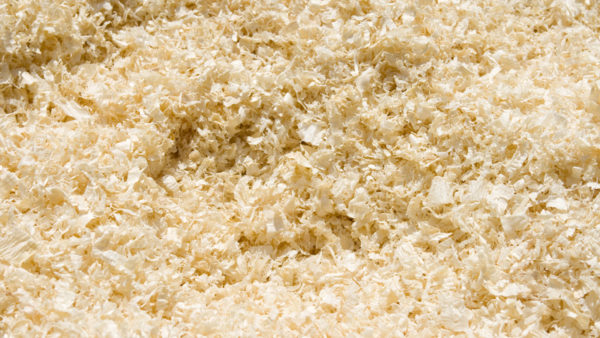German researchers have devised a passive-but-automatic shading system in which delicate fabric flowers unfold when sunlight hits, helping to keep modern glass buildings cool.
The system uses a matrix of fabric components with shape-memory actuators built into special wires.Â
The ‘flowers’ quietly bloom when the façade heats up, and fold when a cloud passes.
Designed by scientists and artists, the thermally-reactive matrix could conserve energy in modern glass buildings, which are prone to being hothouses in summer.
A demonstration unit has been built and researchers hope to build and test more before a planned commercial launch of the technology in 2017.Â
Artsy science
The sun shield came out of a collaboration between researchers from the Fraunhofer Institute for Machine Tools and Forming Technology IWU in Dresden and the Department of Textile and Surface Design at Weissensee School of Art in Berlin.
They worked on a concept developed by design student Bára Finnsdóttir.
A demonstrator matrix has been put together. It’s made up of 72 individual fabric modules shaped like flowers. Each module has shape-memory actuators integrated into it – thin 80-mm-long wires of nickel-titanium alloy that remember their original shape when exposed to heat.
“When you bend the wire, it keeps that shape. Then when you expose it to heat, it remembers the shape it had originally and returns to that position,” said André Bucht, department head at Fraunhofer IWU.
“We don’t need any power since we can rely solely on thermal energy to control the façade element,” he added.
Christiane Sauer, a professor at the Weissensee School of Art, said the mixing of art and science was crucial.
“The challenge in this project was how to bring together innovative technology and design,” she said. “Having designers and scientists work together is the key to pioneering concepts for smart building envelopes.” Â
Worst offenders
In Germany, buildings account for almost 40% of all energy usage, the Fraunhofer Institute said.
Heating, cooling and ventilating homes, offices and public spaces is expensive – and offices with huge glass façades are one of the worst offenders in terms of energy wastage.Â
Designed for large expanses of glass, the matrix can be attached either on the outer layer of glass or in the space between panels, in the case of multi-layer façades.Â
The Fraunhofer Institute said the fabric modules can be designed to suit a range of applications. “For instance, you might want to replace the circular design with triangles or a honeycomb arrangement,” said Bucht. “You can also control the level of sun exposure for individual sections of the façade.”
In the next phase of the project, the researchers want to collaborate with industry to develop more prototypes for testing buildings.Â
“One priority will be to design fabric elements that are stable enough to withstand any weather,” said Bucht.Â
The plan is to have versions for new builds as well as variants suitable for retrofitting onto existing buildings. The goal is for the systems to be ready for market launch by mid-2017, said the institute.
Researchers are now thinking of what more eco-friendly things the sun shield could do.
“It might be possible to store solar thermal energy and then release it when needed to heat the interior, for instance at night,” Bucht said. “Another idea is to coat the flower fabric components with malleable, organic solar cells in order to generate electricity that can be used within the building.”
Image: The façade element operates using integrated shape-memory alloys and so doesn’t require an external power source (Bára Finnsdóttir/Weißensee School of Art Berlin)
Comments
Comments are closed.











If this invention is successful and can be easily and commercially produced without causing other damaging effect then the world will certainly contribute to the reduction of global warming.